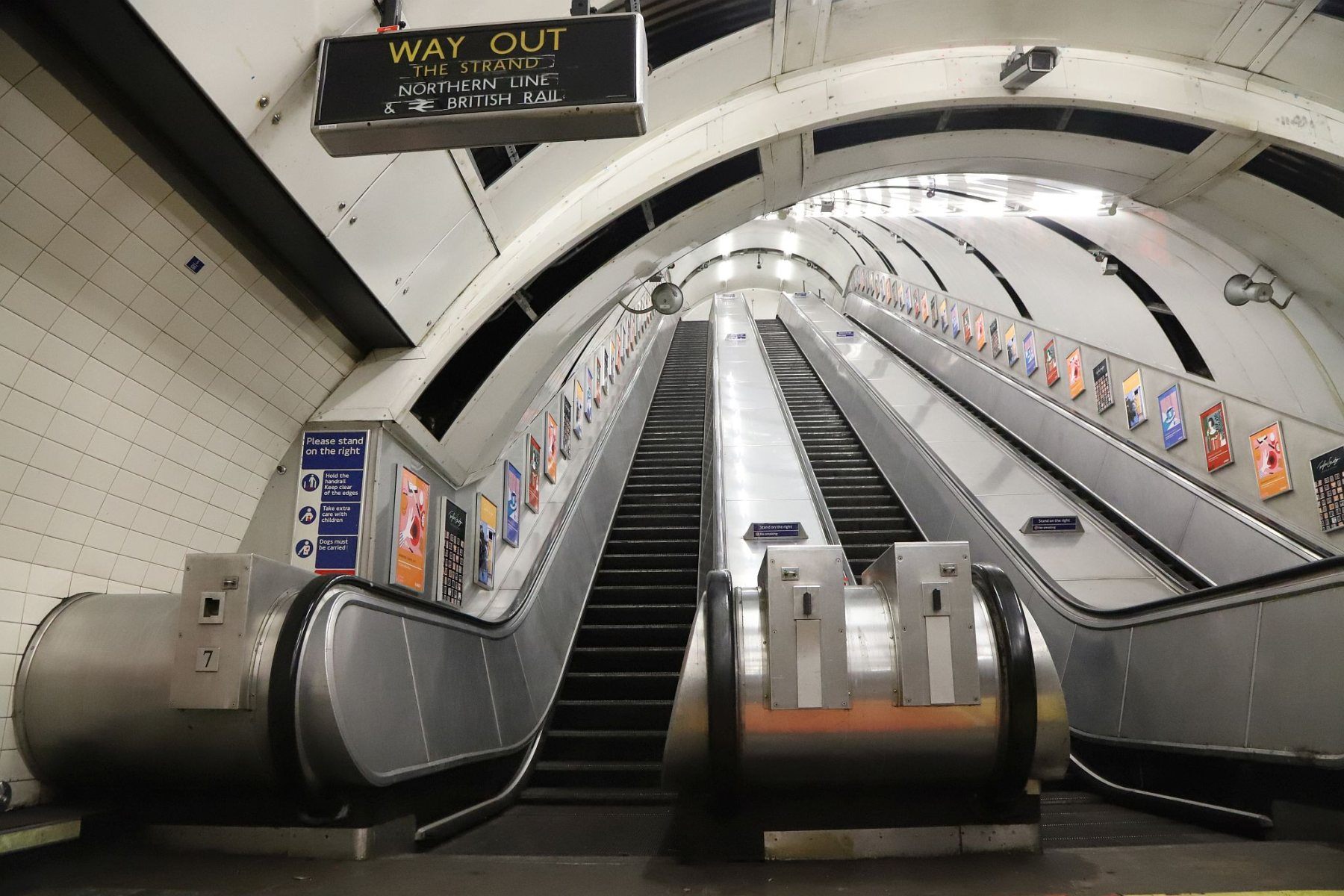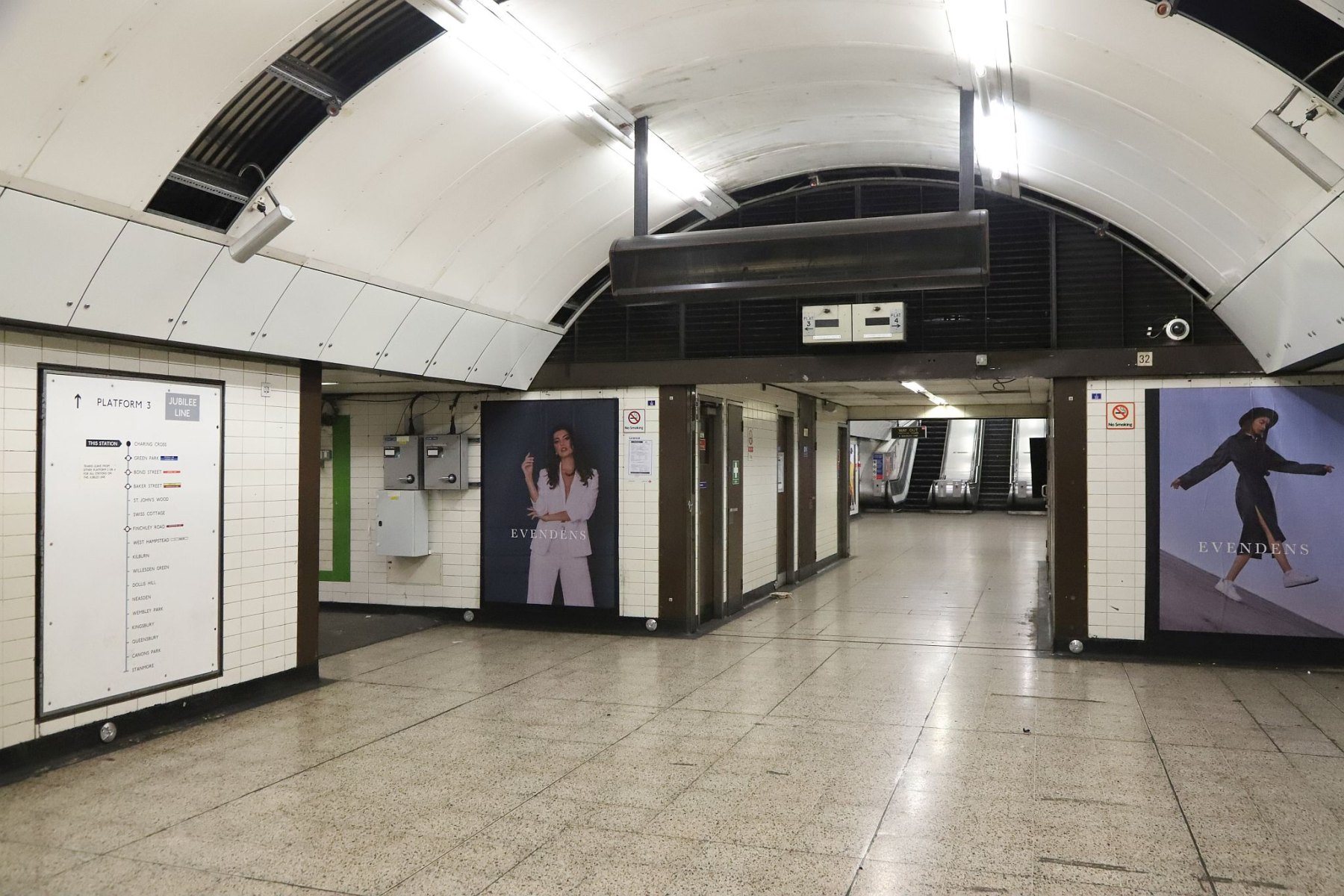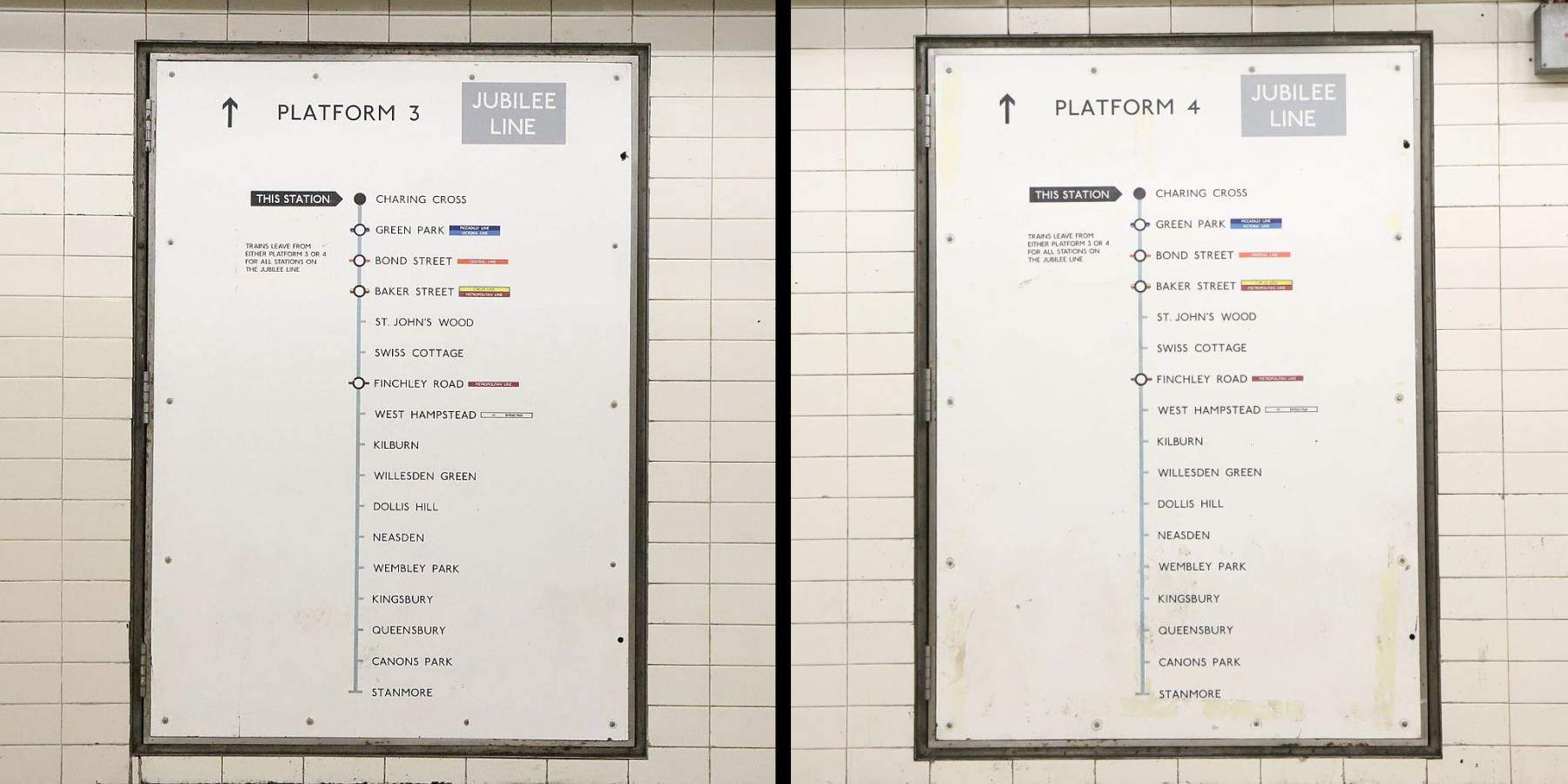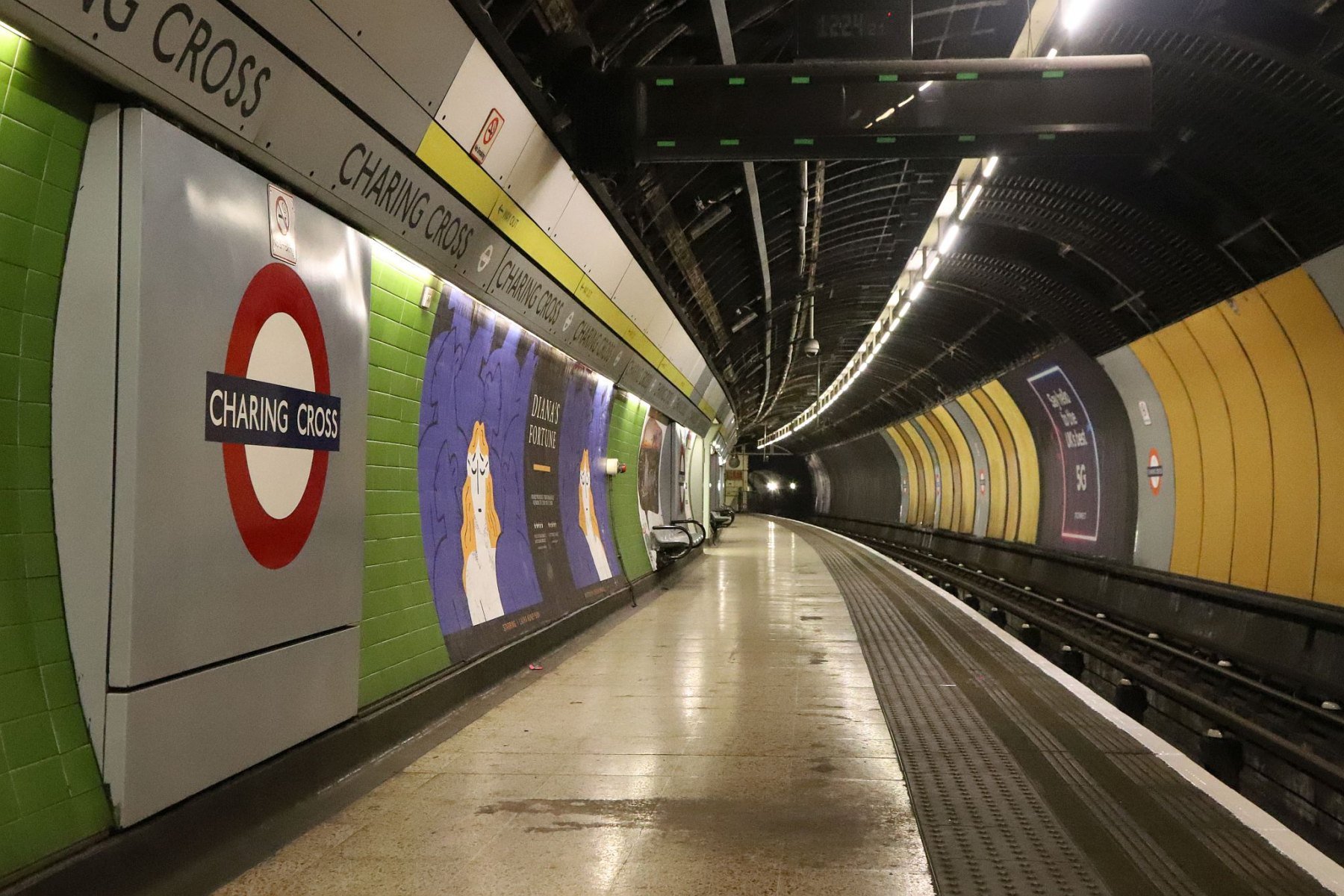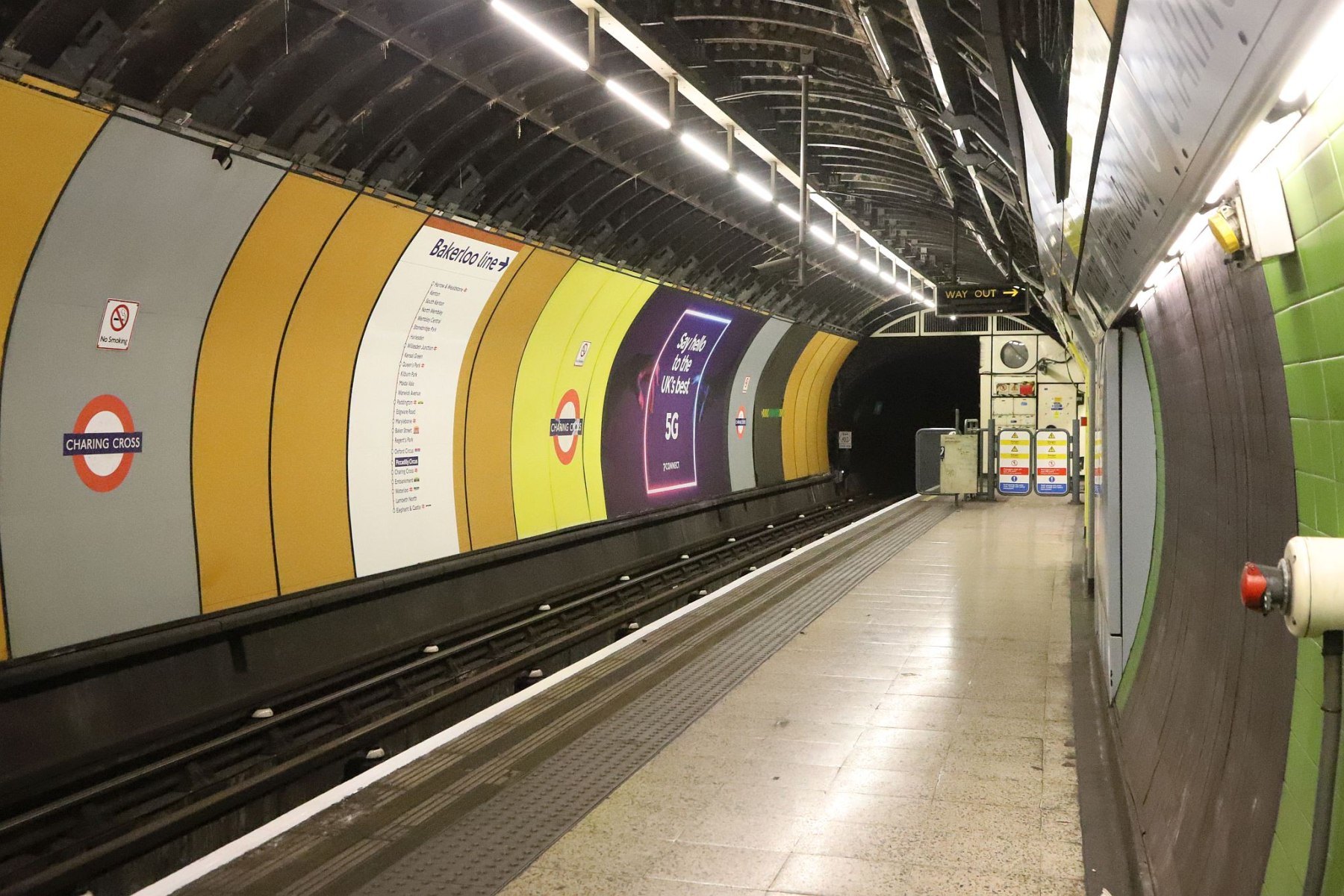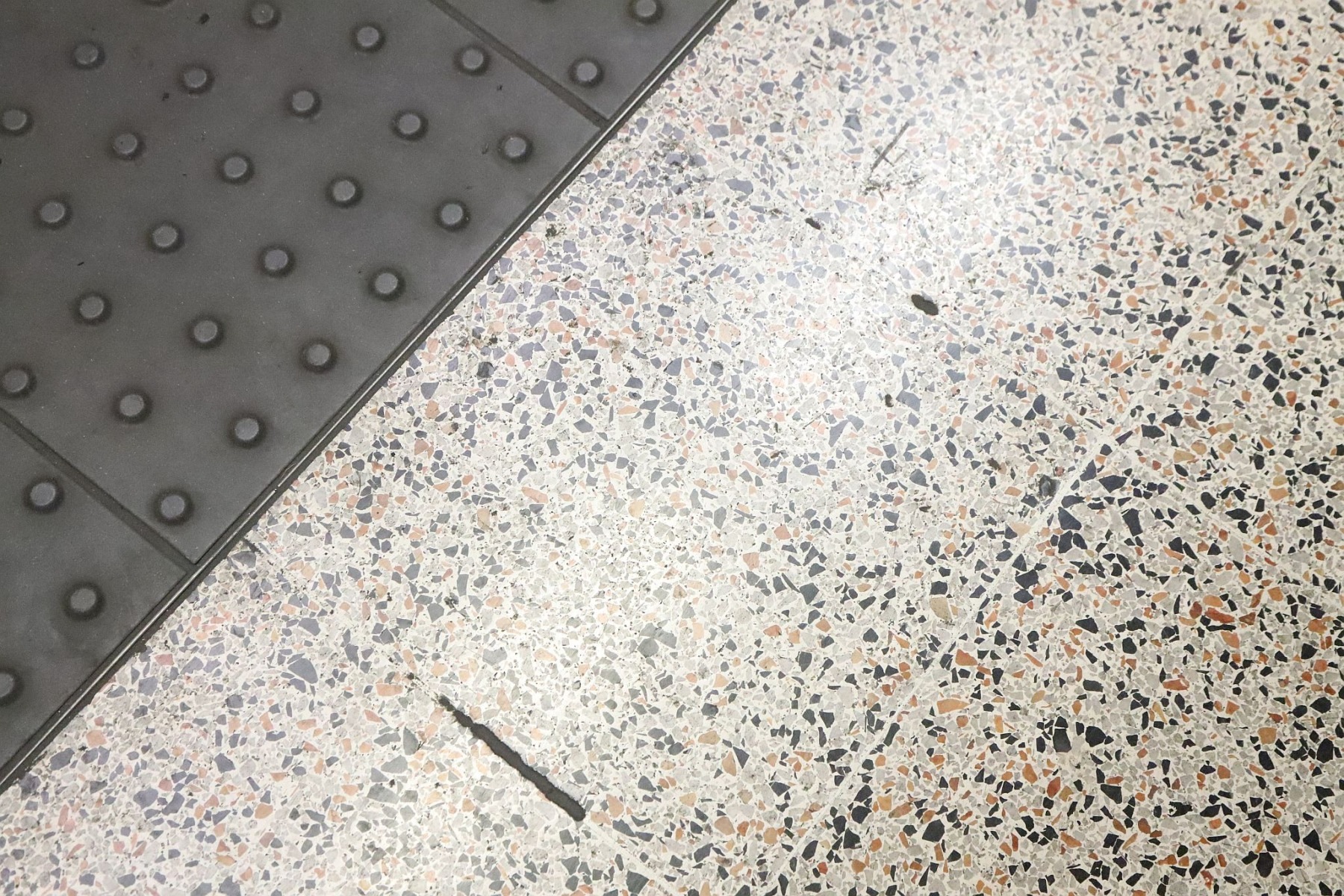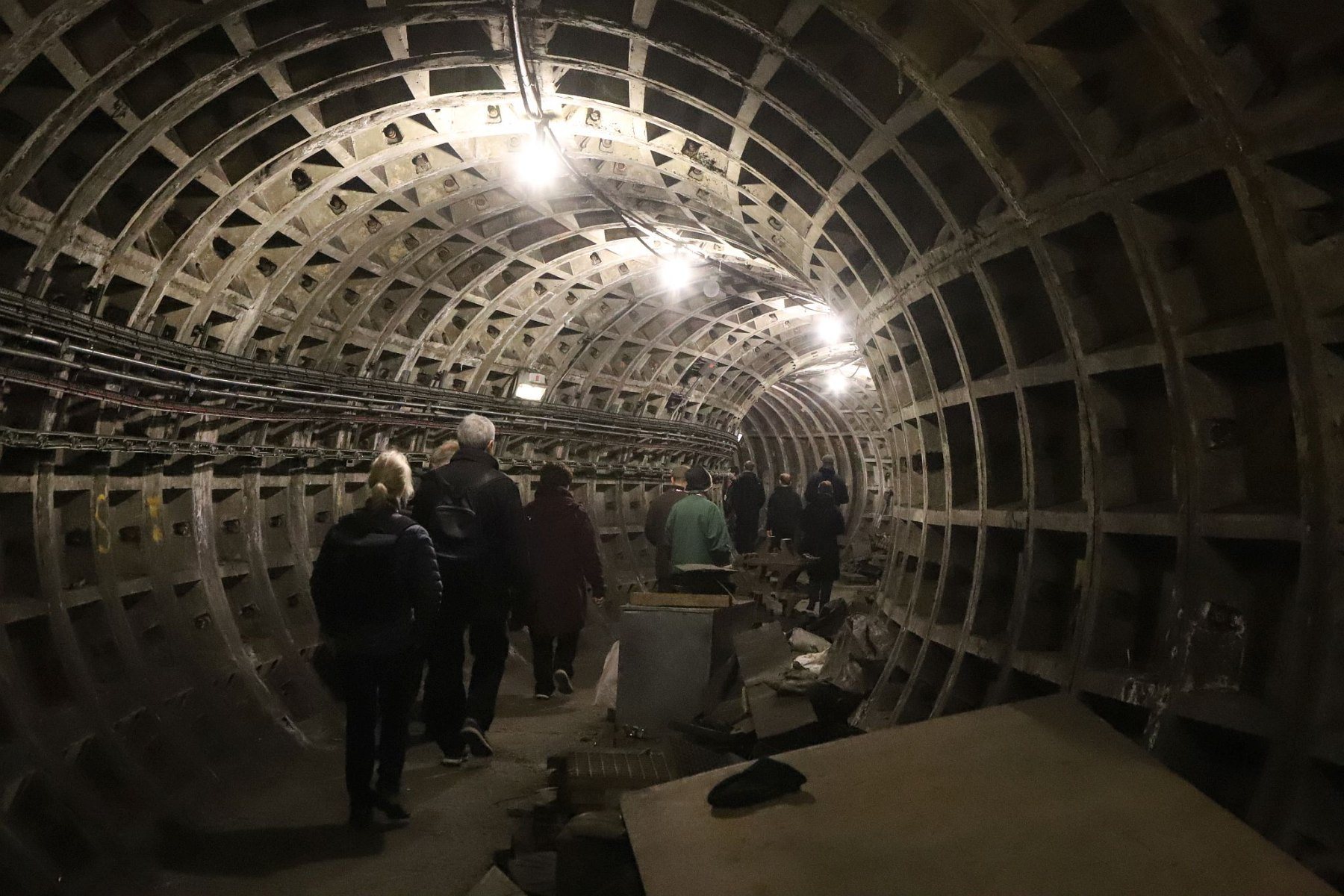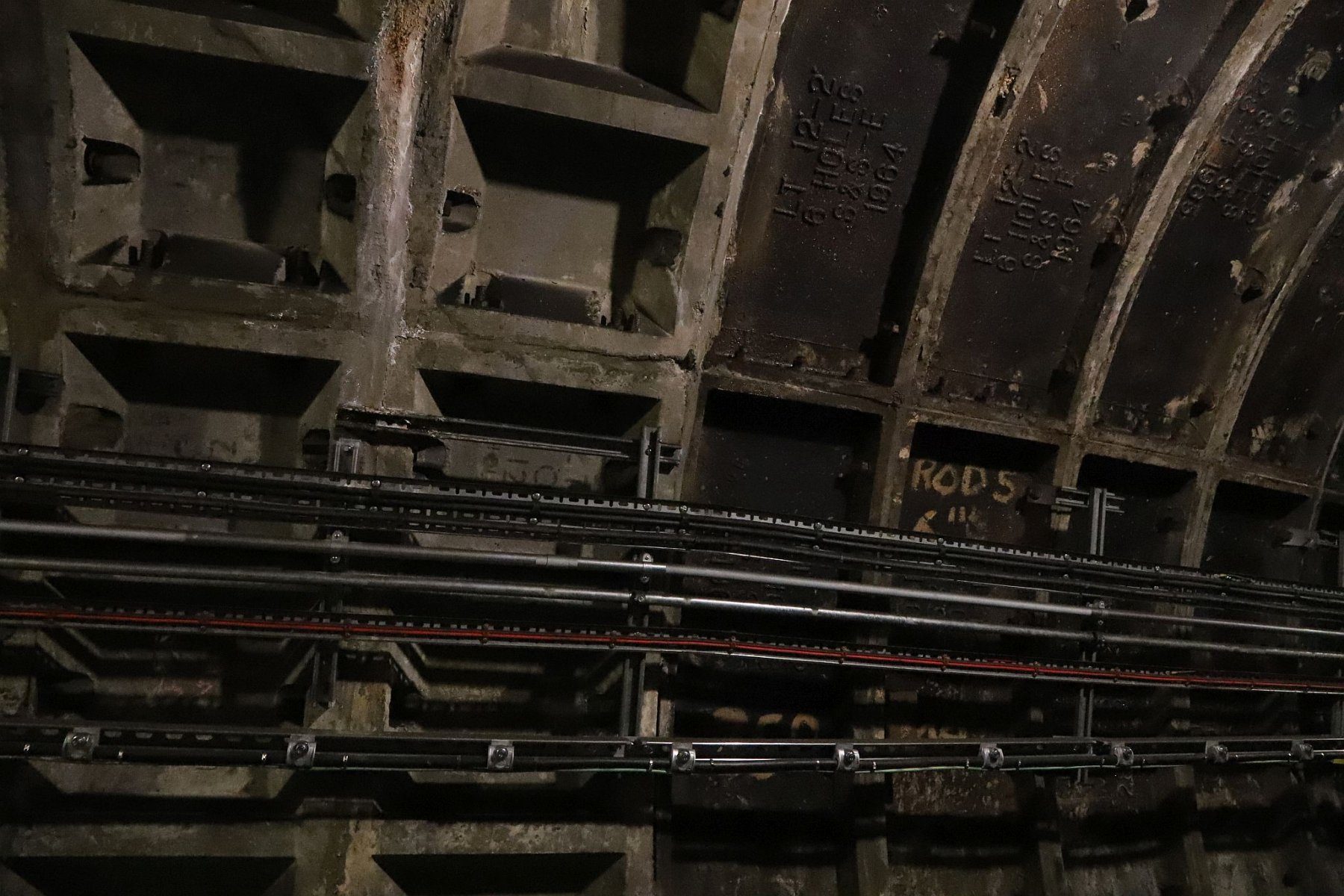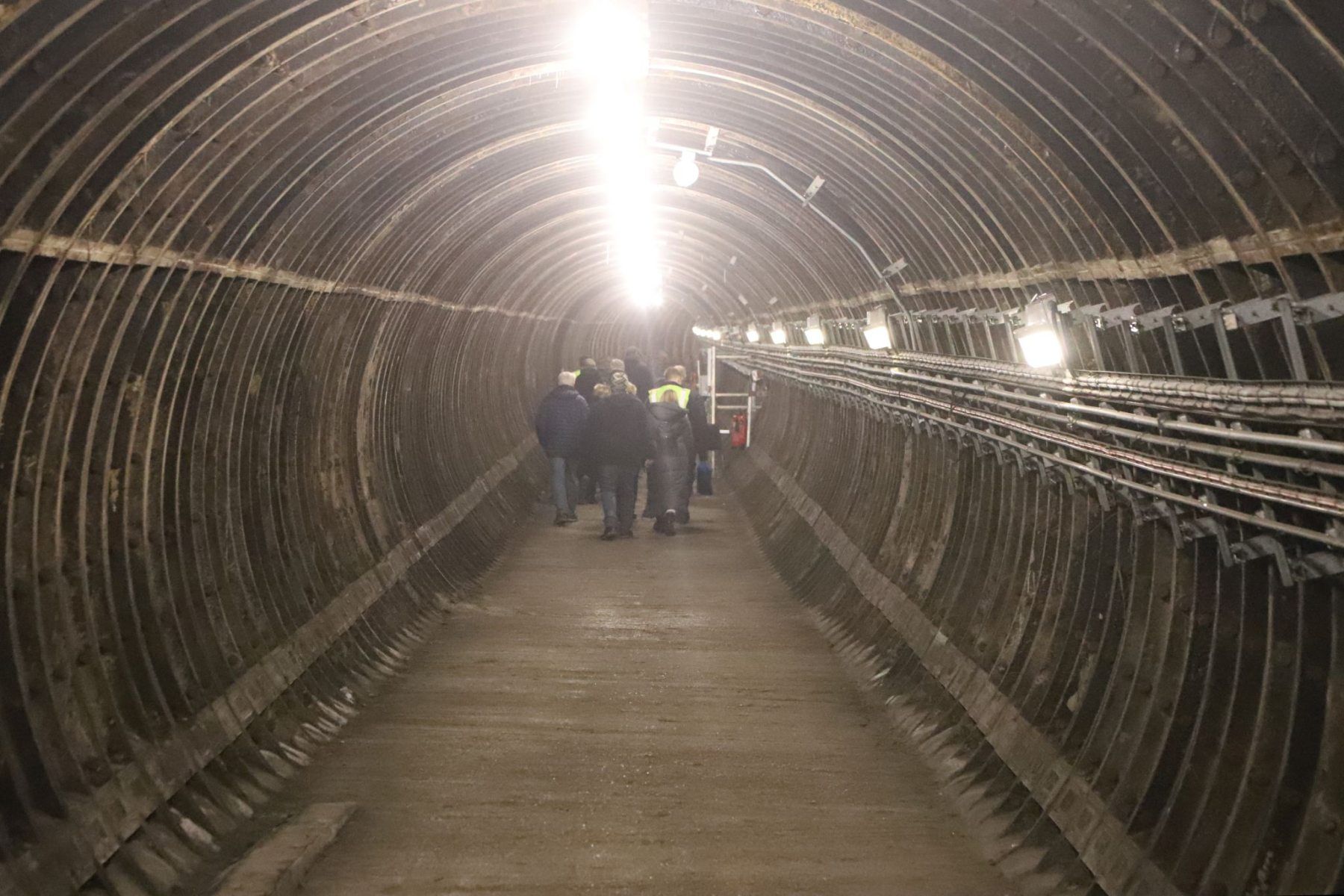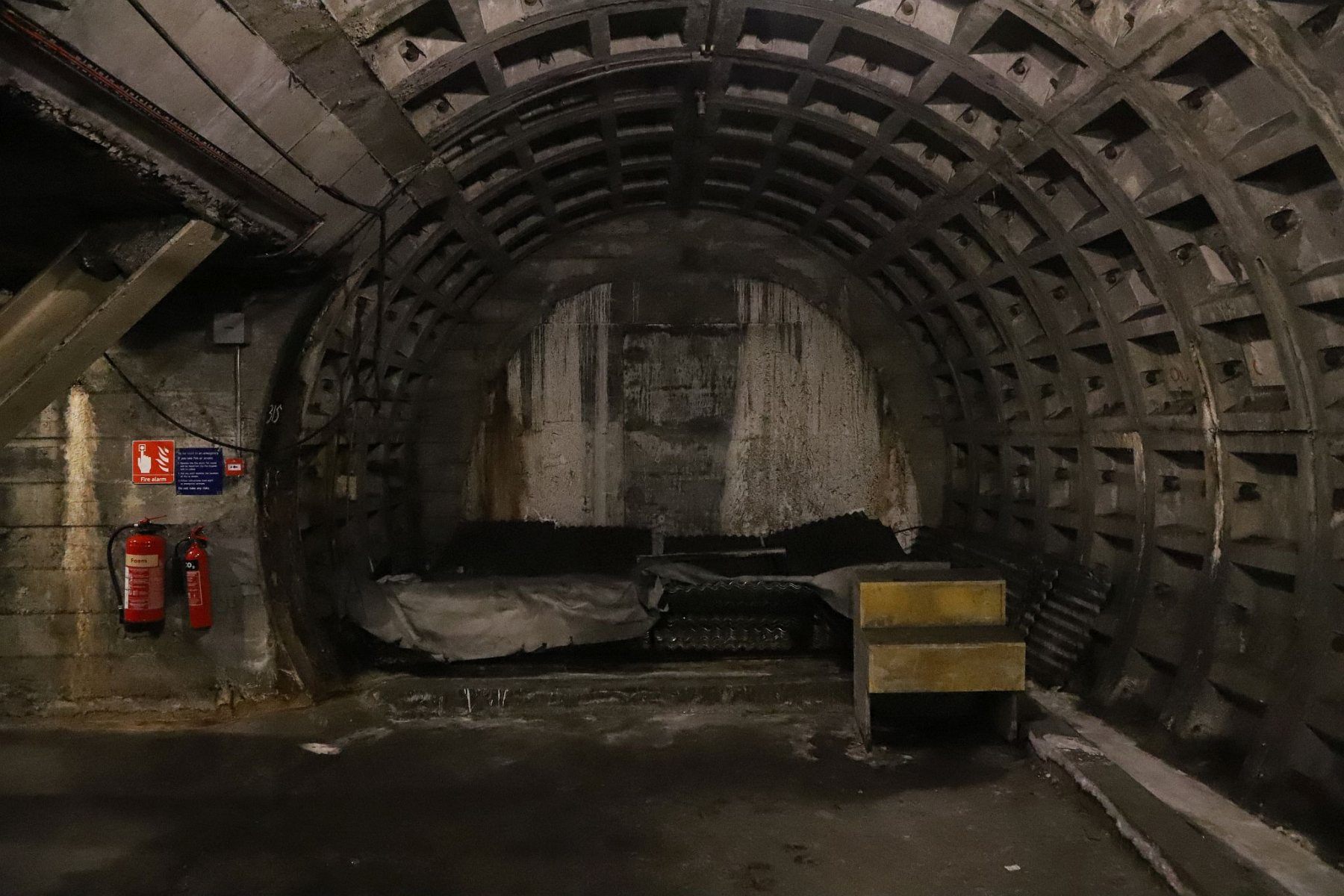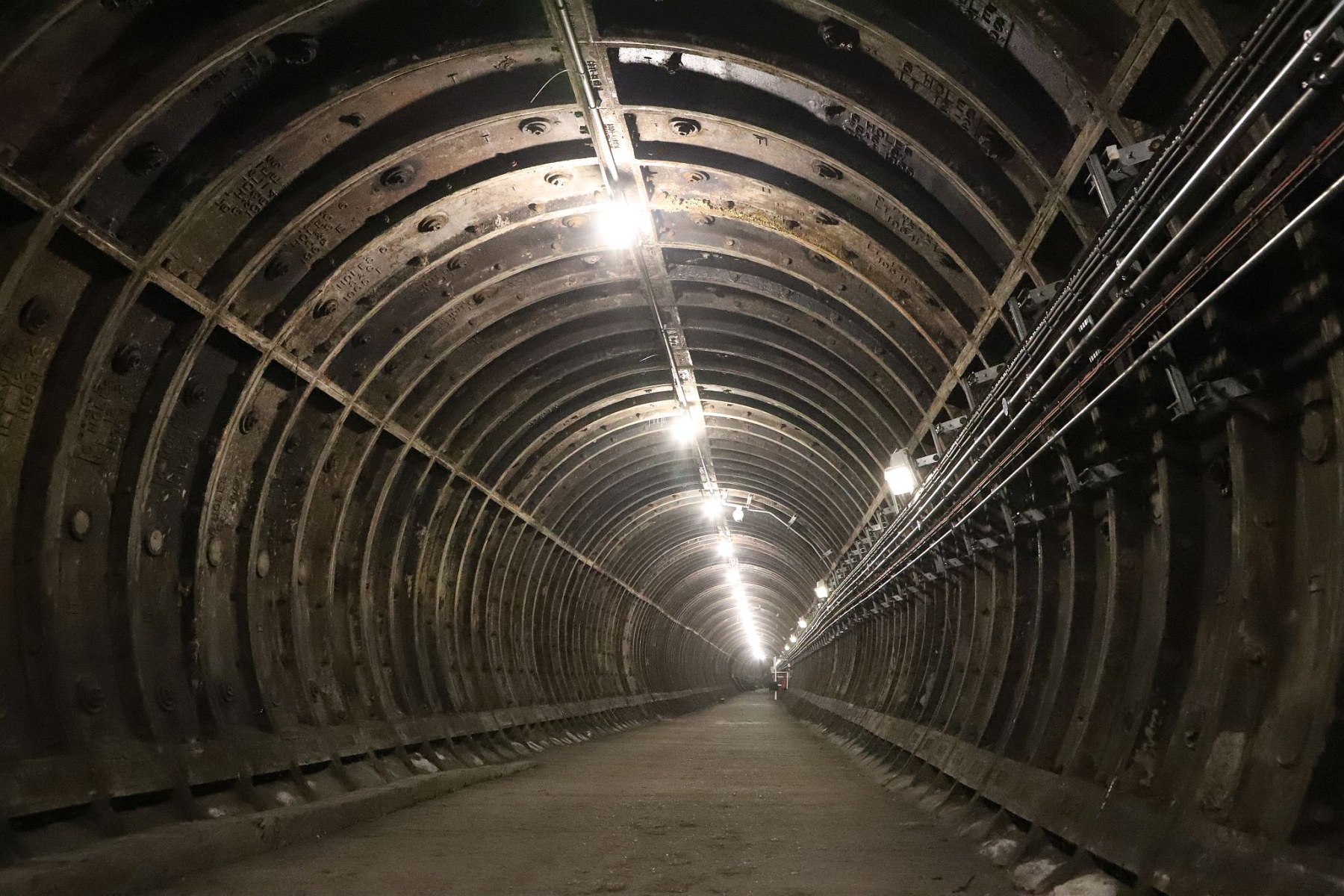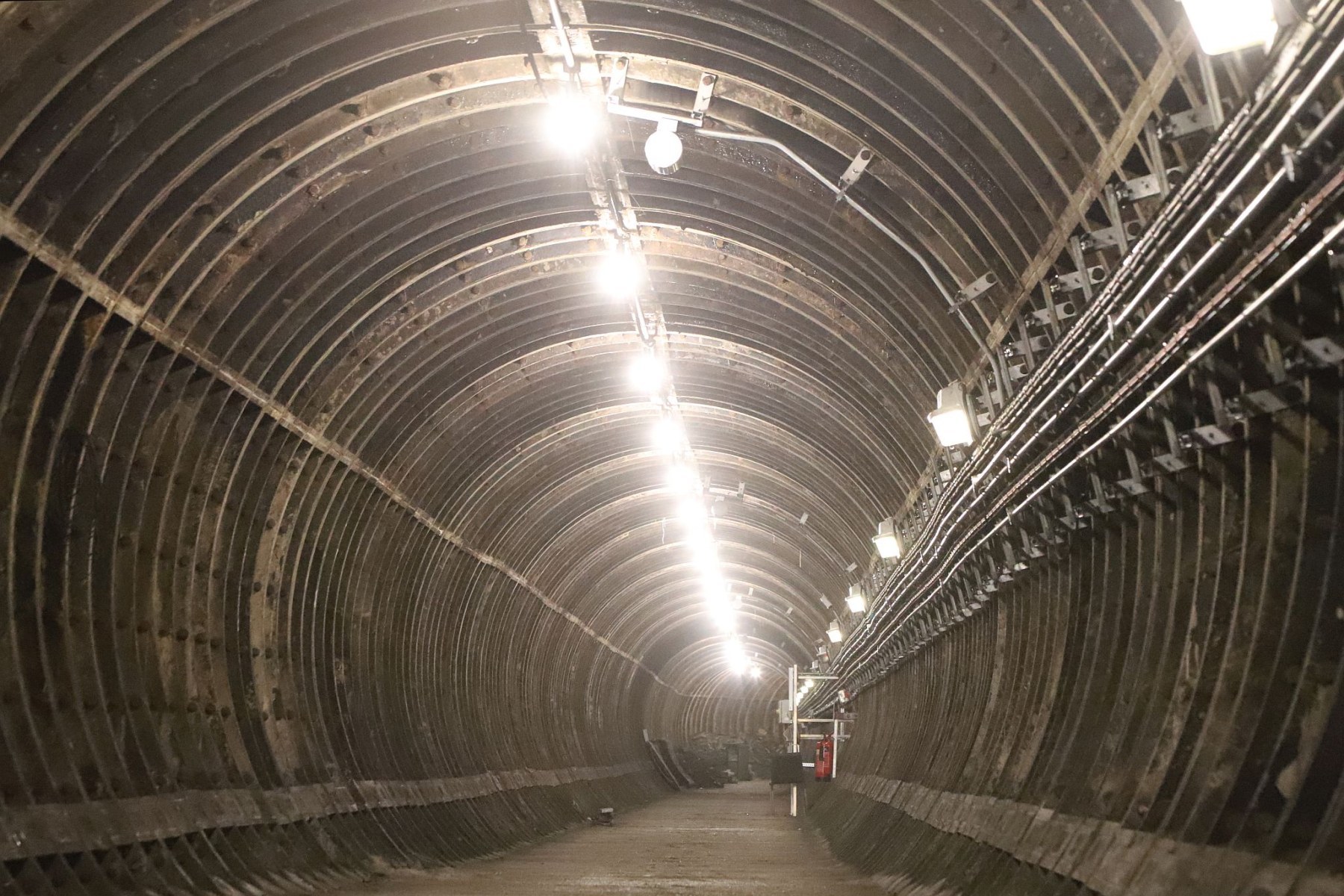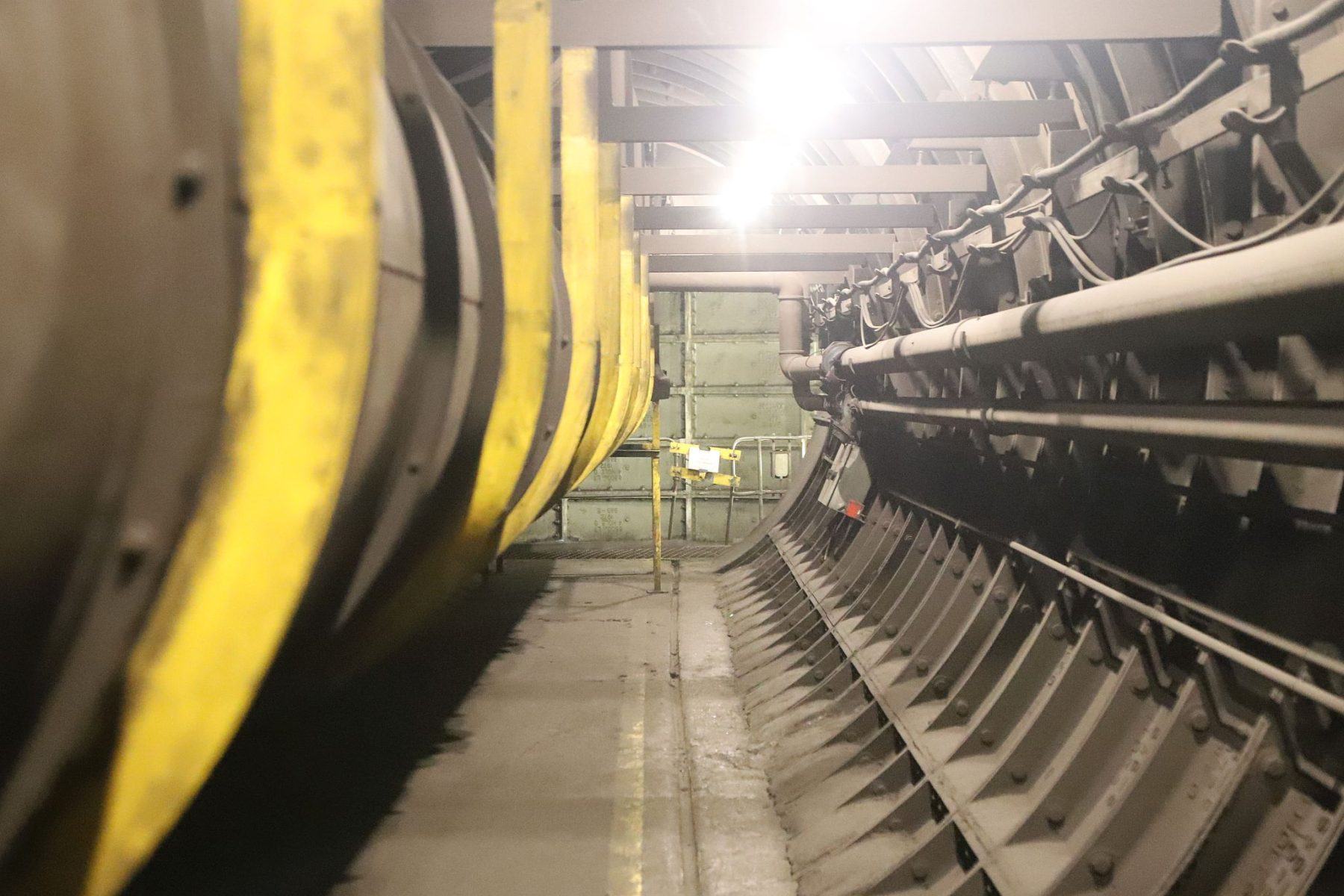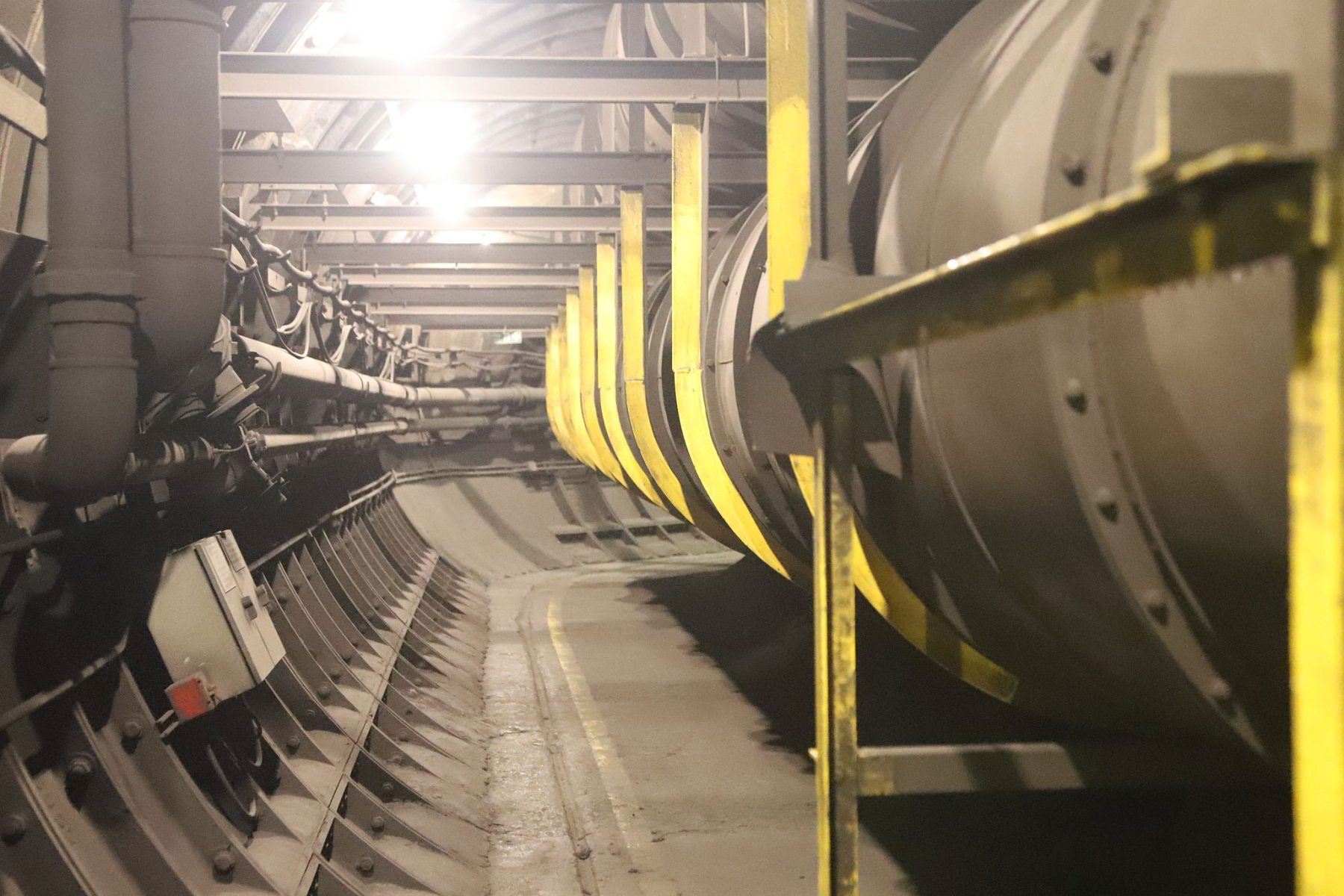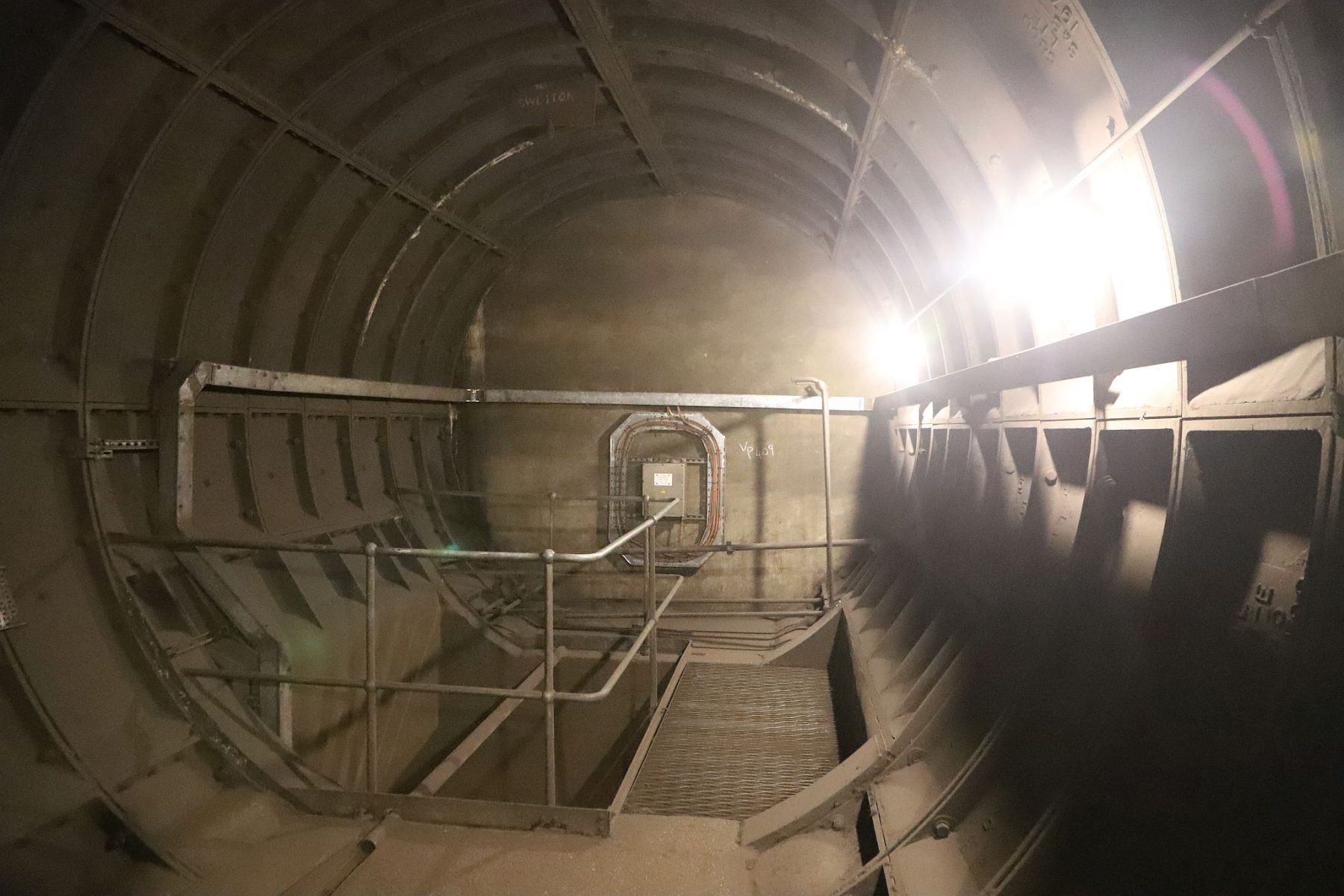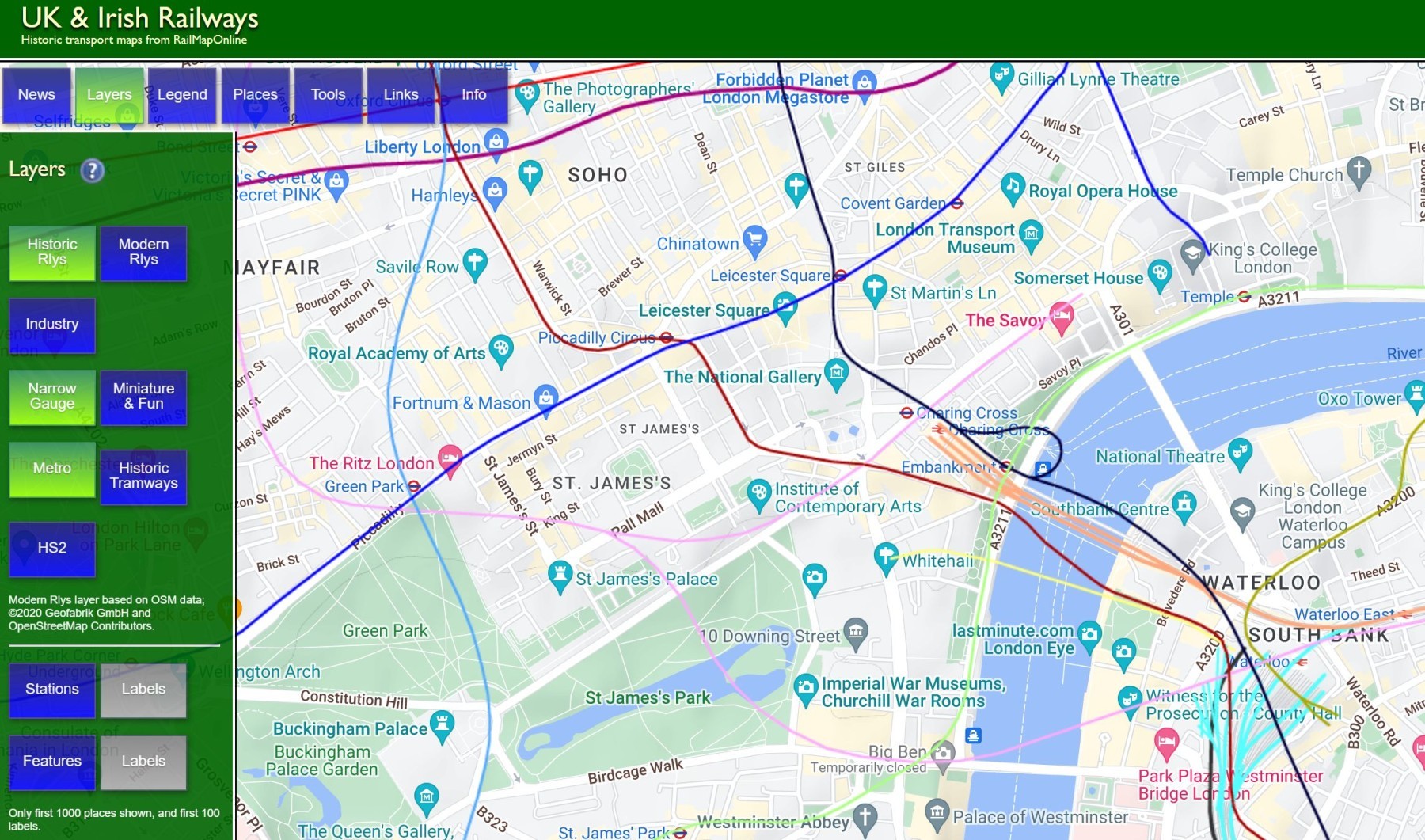Charing Cross Underground Station Tunnels
Whilst not cheap, the Hidden London tours run by the London Transport museum, offer safe access to the areas of stations well away from the public areas. The reality is these tours are not cheap to put on, so they do represent good value for money with knowledgeable guides taking the groups around. Pictures taken on 25th January 2023.
The Station
The platforms for the Jubilee Line are pretty much how they were when the line leading from Green Park to the then final stop at Charing Cross was closed to passenger traffic in 1999. The reason for the closure was for the new Jubilee Line extension to take a straighter route direct to Waterloo from Green Park rather than introduce some torturous S bend curves from Charing Cross to Waterloo.
What was built as the Fleet Line, before being renamed for the Queen’s Silver Jubilee in 1977, was originally intended to be eventually extended down the Strand, passing the now closed Aldwych station on the Piccadilly Line to carry on into the City of London. As London changed over the years, design work for what became the Jubilee Line extension eventually routed the line south of the River Thames before heading East past Docklands and then on to Stratford.
The tracks still have an operational role, even if no passengers ever ride them. The tunnels are used to store extra trains to cope with fluctuating service demands and for driver operator training.
Film and TV
Charing Cross Jubilee Line platforms have now been closed longer than they were ever open in passenger service. Today, it is used regularly by film and TV production companies that need a modern underground station in their story. It has appeared in Bond, Bourne and Paddington movies. Stories needing an historic station are filmed at the nearby Aldwych station.
Escalators
Having descended to the Bakerloo Line platforms, opening a discrete door reveals another set of escalators descending to the Jubilee Line platforms.
Passenger Circulating Areas
Platforms
Platform 3
The adverts on the walls are modern fakes to make life easy for the TV and film production companies. If they were real adverts, a license fee would potentially have to be paid for any trade mark names, such as Coca-Cola, that appeared on screen.
The line continues into overrun tunnels which run East as far as the now closed Aldwych station on the Piccadilly Line, although there is no physical connection.
Platform 4
The second warning line back from the platform edge was an experiment in using luminescent paint. The roof lining was removed in response to the fire at King’s Cross after it was discovered the lining would generate toxic smoke if involved in a fire.
The inlaid chips of marble on the platform surface are the colours of the three underground lines to serve Charing Cross station at the time of the Jubilee Line’s opening in 1979.
Jubilee Line Construction Tunnel
Being central London, Charing Cross was already a cramped place when construction was started in the 1970s. The solution was to drop two shafts where the Sainsbury Wing of the National Gallery is now located and then dig long service tunnels over to where the construction was taking place on the far side of Trafalgar Square (See Bibliography 1).
The Kink in the Tunnel
Entering the tunnel from the public passageway it is briefly straight before a giant kink takes the tunnel round to the main straight section. The kink was needed to orbit around the foundations of Nelson’s Column, the centrepiece of Trafalgar Square.
To ease movement of loaded skips, the tunnel is built on a falling gradient and is a tube train diameter tunnel but the curves are far too tight to run a tube train down. To the right of the picture can be seen the change from concrete to iron tunnel rings (see below).
Different Tunnel Linings
Once a tunnel has been excavated it has to be lined to stop the earth collapsing into the freshly dug workings. Early tunnels, still used in London, were lined with brick. Most of the tunnels though are lined with segments of iron that were bolted together to create rings.
The building of the Jubilee Line to Charing Cross used concrete, instead of iron, segments. To save costs, iron segments from the 1960s construction of the Victoria Line were used to line the service tunnel, only being replaced with concrete when there were none left. The service tunnel uses both, with the join just at the last of the kink when walking into the tunnel, away from the public areas.
The picture with the wheelie bin is taken looking from the long straight, back towards the public areas. The close up of the tunnel linings is taken on the inside of the curve, the gap between rings was much wider on the outside of the curve as the tunnel changed direction sharply through the kink.
The Long Straight Bit of the Tunnel
The gradient, and length, of the tunnel can be seen in this picture looking from the far end back up to the kink and the public areas of Charing Cross Underground station.
The straight section reaches a dead end locate in the vicinity of Trafalgar Square’s fourth plinth. Turning to the left, the tunnel continues around a curve to another dead end.
Tunnel Photography
The two photos below were taken from roughly the same place looking back up the tunnel to the public areas of the station, the two pictures show the effect of using different amounts of zoom. The picture on the left use 28mm of lens zoom (on a full frame DSLR), with the picture on the right using 105mm. Flash is not allowed on the Underground, so that leaves high ISO to cope with low light – these pictures were mostly taken at ISO 25,600.
Lens flare from the bright points of light in otherwise dark tunnels is an obvious problem although the worst of it can be mitigated by careful framing of the pictures.
Ventilation Tunnel
The early tube railways relied on the piston effect of trains pushing air through the tunnels in front of them. It was quickly realised this was not sufficient. There is a huge amount of hidden infrastructure to take fresh air from ventilation shafts into the deepest recesses of the underground stations. At Charing Cross a ventilation tunnel runs from the Craven Street ventilation shaft. The pictures show the ventilation tunnel’s course down to the Northern Line.
Entering the door from the public areas of the station, the tunnel goes left and right. Turning to the left the ventilation tunnel leads to the ventilation grills above the Northern Line platforms.
Ventilation Ducting
Turning to the right, the ventilation ducting leads to a ventilation shaft reaching to the surface and then up through a tower located in Craven Street which is almost as tall as Nelson’s Column in the centre of Trafalgar Square.
The Northern Line Ventilation Grills
Turning to the left through the door, the ventilation tunnel goes up a short, sharp incline before reaching a dead end housing the two ventilation grills for the Northern Line platforms, through which the trains can be seen coming and going.
Railway Map
The excellent UK Railway Map shows how the tube lines pass through the Charing Cross area. The Jubilee Line is shown in pink.
Bibliography
- Building London’s Underground, Badsey-Ellis Antony, Capital Transport Publishing, 2016
London Transport Museum’s Hidden London tours take people to parts of London Underground normally completely off limits.
I’ve been on most of the tours over the last couple of years. They are all excellent. My favourites have to be Charing Cross and Kingsway Tram Tunnel.
- Aldwych: Used for historic films and Prodigy’s “Firestarter”
- Baker Street: The world’s oldest underground station
- Charing Cross: Very long construction tunnels and see where films are made
- Clapham South: Huge air raid shelter and its influence on Brixton
- Down Street: Used by Winston Churchill to escape air raids
- Euston: Huge numbers of posters from the 1960s
- Holborn: The other end of the Aldwych branch
- Kingsway Tram Tunnel: Huge sub-surface space for tram
- Moorgate: Lots of tunnels to walk through and a huge fan
- Piccadilly Circus: See behind the mysterious platform grills
- Shepherd’s Bush: Ventilation and air raid shelter tunnels

